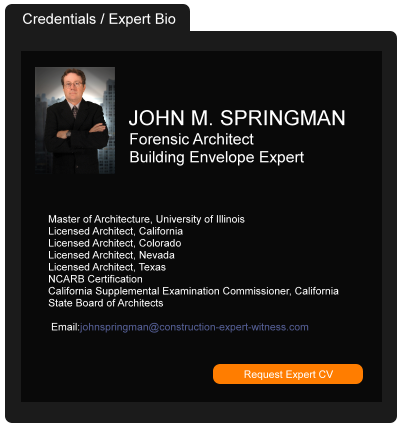The Fair Share Act Impacts the Strategic Planning of a Jury Trial
May 10, 2017 —
Andrew Ralston, Jr. - White and Williams LLPComplex questions surrounding the application of the Fair Share Act, which modified Pennsylvania’s common law “joint and several” liability law, are being taken up by courts in the Commonwealth with increasing frequency. Given the practical consequences of the differences in application between the Act and “joint and several” liability, additional litigation over the application of the Fair Share Act to real world factual situations will undoubtedly arise.
Recent Caselaw
Currently, in Roverano v. PECO Energy, the Superior Court of Pennsylvania is considering the question of whether, under the Fair Share Act, the jury, or else the trial judge, is responsible for the task of apportioning liability to multiple defendants in a strict liability case. In Roverano – an asbestos case -- a jury awarded the plaintiff $6.3 million. On the verdict sheet were eight joint tortfeasor co-defendants. The judge did not allow the jury to apportion liability to each defendant and, as a result, no guidance was provided by the jury about how much each defendant was to contribute to the award. Instead, the judge merely divided the jury’s award by eight (the number of defendants in the case) and apportioned to each defendant one-eighth of the verdict amount.
Read the court decisionRead the full story...Reprinted courtesy of
Andrew Ralston, Jr., White and Williams LLPMr. Ralston may be contacted at
ralstona@whiteandwilliams.com
Floating Cities May Be One Answer to Rising Sea Levels
August 07, 2022 —
Adam Minter - BloombergThanks to climate change, sea levels are lapping up against coastal cities and communities. In an ideal world, efforts would have already been made to slow or stop the impact. The reality is that climate mitigation remains difficult, and the 40% of humanity living within 60 miles of a coast will eventually need to adapt.
One option is to move inland. A less obvious option is to move offshore, onto a floating city.
It sounds like a fantasy, but it could real, later if not sooner. Last year, Busan, South Korea's second-largest city, signed on to host a prototype for the world's first floating city. In April, Oceanix Inc., the company leading the project, unveiled a blueprint.
Representatives of SAMOO Architects & Engineers Co., one of the floating city's designers and a subsidiary of the gigantic Samsung Electronics Co., estimate that construction could start in a "year or two," though they concede the schedule might be aggressive. “It's inevitable,” Itai Madamombe, co-founder of Oceanix, told me over tea in Busan. “We will get to a point one day where a lot of people are living on water.”
Read the court decisionRead the full story...Reprinted courtesy of
Adam Minter, Bloomberg
Wyncrest Commons: Commonly Used Progress Payments in Construction Contracts Do Not Render Them Installment Contracts
December 11, 2023 —
Benjamin J. Hochberg - Peckar & Abramson, P.C.In BIL-JIM Construction Company, Inc. v. Wyncrest Commons, LP, 2023 WL 7276637 (Unpublished, decided November 3, 2023), the New Jersey Appellate Division was asked to consider two issues regarding the interpretation and application of a construction contract that utilized the standard form American Institute of Architects owner/contractor agreement (AIA Document A101-2007) (the “AIA Contract”). Specifically, it was asked to consider: 1) whether a modified AIA Contract was an “installment contract,” whereby each progress payment was subject to its own statute of limitations; and 2) whether and when work had been approved in the context of New Jersey’s Municipal Land Use Law. While the decision is presently unpublished, it provides guidance as to how form contracts utilizing the same or similar terms will be treated by New Jersey’s courts and is a reminder that the potential for future claims must be considered during contract negotiations.
Discussion
The primary issue in Wyncrest was whether an AIA Contract was an “installment contract,” and the remaining issues turned on the resolution of this question. Wyncrest, the owner for the project at issue, did not dispute that its contractor, BIL-JIM Construction Company, Inc., had not been fully paid for work that it had performed in connection with a construction project located in Ocean County, New Jersey. Instead, Wyncrest argued that because its AIA Contract with BIL-JIM required that invoices be presented and paid monthly, it constituted an “installment contract.” As such, older payments would be treated as individual transactions and were time barred by the applicable statute of limitations. The trial court agreed with Wyncrest’s characterization of the AIA Contract as an “installment contract,” and found that BIL-JIM’s invoices were each subject to their own statute of limitations. However, the trial court disagreed with Wyncrest’s argument that BIL-JIM’s claim for retainage—which was submitted at the end of its work at the project—was time barred.
Read the court decisionRead the full story...Reprinted courtesy of
Benjamin J. Hochberg, Peckar & Abramson, P.C.Mr. Hochberg may be contacted at
bhochberg@pecklaw.com
Everyone's Moving to Seattle, and It's Stressing Out Sushi Lovers
July 16, 2014 —
Peter Robison and Alison Vekshin – BloombergSooner or later, everyone moves to Seattle, went one saying in the city’s 1990s heyday. The trouble residents face now: What happens after everyone does?
Known for hiking and the open spaces of the American West, Seattle is in the midst of another boom that’s made it the fastest-growing among the top 50 U.S. cities. That’s causing angst over density, affordability, crime and other issues more familiar to an East Coast metropolis. At the same time, pay is outpacing the national average and an already rich cultural life is thriving as new restaurants and nightspots open.
“It’s a blessing,” Seattle Mayor Ed Murray, a 59-year-old Democrat, said of the growth. “But with it comes some real challenges.”
Mr. Robison may be contacted at robison@bloomberg.net; Ms. Vekshin may be contacted at avekshin@bloomberg.net
Read the court decisionRead the full story...Reprinted courtesy of
Peter Robison and Alison Vekshin, Bloomberg
Liability Insurer Precluded from Intervening in Insured’s Lawsuit
September 17, 2018 —
David Adelstein - Florida Construction Legal UpdatesThere are cases where I honestly do no fully understand the insurer’s position because it cannot have its cake and eat it too. The recent opinion in Houston Specialty Insurance Company v. Vaughn, 43 Fla. L. Weekly D1828a (Fla. 2d DCA 2018) is one of those cases because on one hand it tried hard to disclaim coverage and on the other hand tried to intervene in the underlying suit where it was not a named party.
This case dealt with a personal injury dispute where a laborer for a pressure washing company fell off of a roof and became a paraplegic. The injured person sued the pressure washing company and its representatives. The company and representatives tendered the case to its general liability insurer and the insurer–although it provided a defense under a reservation of rights—filed a separate action for declaratory relief based on an exclusion in the general liability policy that excluded coverage for the pressure washing company’s employees (because the general liability policy is not a workers compensation policy). This is known as the employer’s liability exclusion that excludes coverage for bodily injury to an employee. The insurer’s declaratory relief action sought a declaration that there was no coverage because the injured laborer was an employee of the pressure washing company. The pressure washing company claimed he was an independent contractor, in which the policy did provide limited coverage pursuant to an endorsement.
Read the court decisionRead the full story...Reprinted courtesy of
David Adelstein, Kirwin NorrisMr. Adelstein may be contacted at
dma@kirwinnorris.com
The Evolution of Construction Defect Trends at West Coast Casualty Seminar
May 03, 2018 —
Don MacGregor - Bert L. Howe & Associates, Inc.Twenty-five years ago. 1993. On January 23rd, Bill Clinton was sworn in as the 42nd President of the United States. The average cost of a gallon of gasoline was $1.16, a movie ticket cost $4.00, and the average cost of a new home was $113,200.00.
1993 also marked the first of what would be a quarter century of annual seminars hosted by West Coast Casualty Service, and provided to the combined professionals within the construction defect community. As the seminar has grown both in attendance and prominence within this community under the watchful stewardship of David and Coral Stern, much has changed both with regard to the content of the seminar and the climate within which it was presented. A quick look at the topics addressed over the past 25 years of the Construction Defect Seminar provides one with a veritable history of construction defect litigation and insurance coverage trends across the United States and beyond.
While the first seminar was hosted in 1993, my first attendance didn’t occur until 1999, and the first time I was honored to be a panelist would have to wait until 2007. In the subsequent years, I’ve had the opportunity to sit on panels an additional three times, and each one I gained rare and valuable insights into the construction defect community, its willingness to challenge itself, and the amazing professionals we all have the distinct pleasure of working with every day (and whom we sometimes take too much for granted).
In the mid to late 90’s, topics at the seminar included such subjects as the Montrose Chemical Corp v. Superior Court decision (Montrose) regarding a carrier’s duty to defend and the subsequent Stonewall Insurance case that examined the duty to indemnify in the context of construction defect claims. The California Calderon Act of 1997, laying out the roadmap for HOA’s filing construction defect lawsuits was also a topic of discussion and debate within the West Coast “arena.”
The new millennium saw the landmark Aas v. William Lyon decision, which disallowed negligence claims for construction defects in the absence of actual resultant damage. This was followed by Presley Homes v. American States Insurance wherein the court ruled that a duty to defend applies where there is mere potential for coverage and the duty to defend applies to the entire action. Each of these bellwether decisions was addressed contemporaneously by panels at the West Coast seminar, contemporaneously bringing additional dialog to the CD community, from within the community.
2002 brought what has become the defining legislation in California regarding construction defect litigation and a builder’s right to repair. Senate Bill 800 (SB800), and its subsequent codification as Title 7, Part 2 of Division 2 of the California Civil Code, Sections 895 through 945.5 would become the defining framework for similar legislation across the United States. During the course of its drafting, movement through the legislature, and final adoption in January of 1993, many of the questions raised and debated in committees in Sacramento, had already been and were continuing to be addressed by panelists at the West Coast Seminar. How does SB800 work with Calderon? How does it affect the prior Aas decision? What now constitutes a defect, and what are timeframes established within the complex pre-litigation process? Open the pages of the 2002 – 2004 seminar invitations and you’ll see panels comprised of the finest members of the insurance law and coverage communities addressing those very questions (and more)!
As the first decade of the new century drew to a close, a brief review of the WCC invitations from that period suggests a trend towards programmatic analyses of key themes selected for the seminar. In 2008, my second opportunity as a guest speaker, topics included a review of the state of construction defect litigation in a post-SB 800 environment. Panelists offered retrospective insight into the state of right to repair statutes in multiple states, while others offered a glimpse at where the industry might be headed, as similar legislation was enacted across the country. As always, pertinent court decisions bearing on construction defect, both in California, and elsewhere were given unique perspective and additional clarity by multiple panels of gifted speakers. In 2009, claims and coverage were examined from multiple unique perspectives, including that of plaintiff, the policyholder, and the insurer. Wrap policies and the gaps in due to self-insured retention obligations were examined.
As we rapidly approach the end of the second decade of the 21st Century, West Coast Casualty’s Construction Defect Seminar continues to lead the construction defect community as the premier source for information and peer dialog on all matters relating to construction law, coverage, and emerging trends. In 2017, the Seminar tackled such broad subjects as the role of women in the construction industry, claims management, and risk management, challenges raised by wrap versus non-wrap litigation, and the emergent trend of apartment to condo conversions (and the attendant coverage challenges).
This month, beginning on May 16th at the Disneyland Resort, in Anaheim California, America’s largest Construction Defect event kicks off its 25th Anniversary celebration. As has been every year since 1993, the seminar invitation promises insurance, legal, and industry professionals an exciting and informative array of salient and timely panel topics, as well as a stellar faculty of gifted panelists. If this year’s seminar is anything like the past 25 years, this edition of West Coast Casualty’s Construction Defect Seminar will not only be informative and educational, but also a promise for another 25 years of peerless service to the construction defect community.
Read the court decisionRead the full story...Reprinted courtesy of
Texas Condo Construction Defect Code Amended
September 17, 2015 —
Beverley BevenFlorez-CDJ STAFFAccording to David H. Fisk of Kane Russell Coleman & Logan PC, “Before filing a lawsuit or initiating an arbitration proceeding pertaining to a construction defect, a condominium association in Texas with eight or more units must now comply with the newly added Section 82.119 to Chapter 82 of the Texas Property Code.”
Fisk reported that the new section “requires affected associations to have a licensed professional engineer inspect the units and common elements in question and prepare a written report that (1) identifies the specific units or common elements, (2) describes the present physical condition of the units or common elements, and (3) describes any modifications, maintenance, or repairs to the units or common elements performed by the unit owners or the association.”
Read the court decisionRead the full story...Reprinted courtesy of
Acceptable Worksite: New City of Seattle Specification Provisions Now In Effect
July 13, 2017 —
Lindsay K. Taft - Ahlers & Cressman PLLCThe City of Seattle’s City Purchasing & Contracting Services recently revised its General Special Provisions for City construction contracts to add new “Acceptable Worksite” language. The City indicates that the purpose of the provisions is “to ensure that City construction worksites are respectful and appropriate, including prohibiting bullying, hazing, and other similar behaviors.” An “Acceptable Worksite” is defined as a worksite “that is appropriate, productive, and safe work for all workers” and “free from behaviors that may impair production, and/or undermine the integrity of the work conditions including but not limited to job performance, safety, productivity, or efficiency of workers.”
Prohibited behaviors under the new specification provisions include persistent offensive conduct and language, hazing, offensive jokes about race, gender, or sexuality, assigning undesirable tasks or unskilled work to trained apprentices and journey-level workers, refusal to hire based on race, gender, or sexuality, and references to or requests for immigration status. The new program also includes monitoring, response, and enforcement of the provisions by City Purchasing and Contracting Services employees. Finally, the language must also be incorporated into all sub-tier contracts on City projects.
Read the court decisionRead the full story...Reprinted courtesy of
Lindsay K. Taft, Ahlers & Cressman PLLCMs. Taft may be contacted at
ltaft@ac-lawyers.com


































































